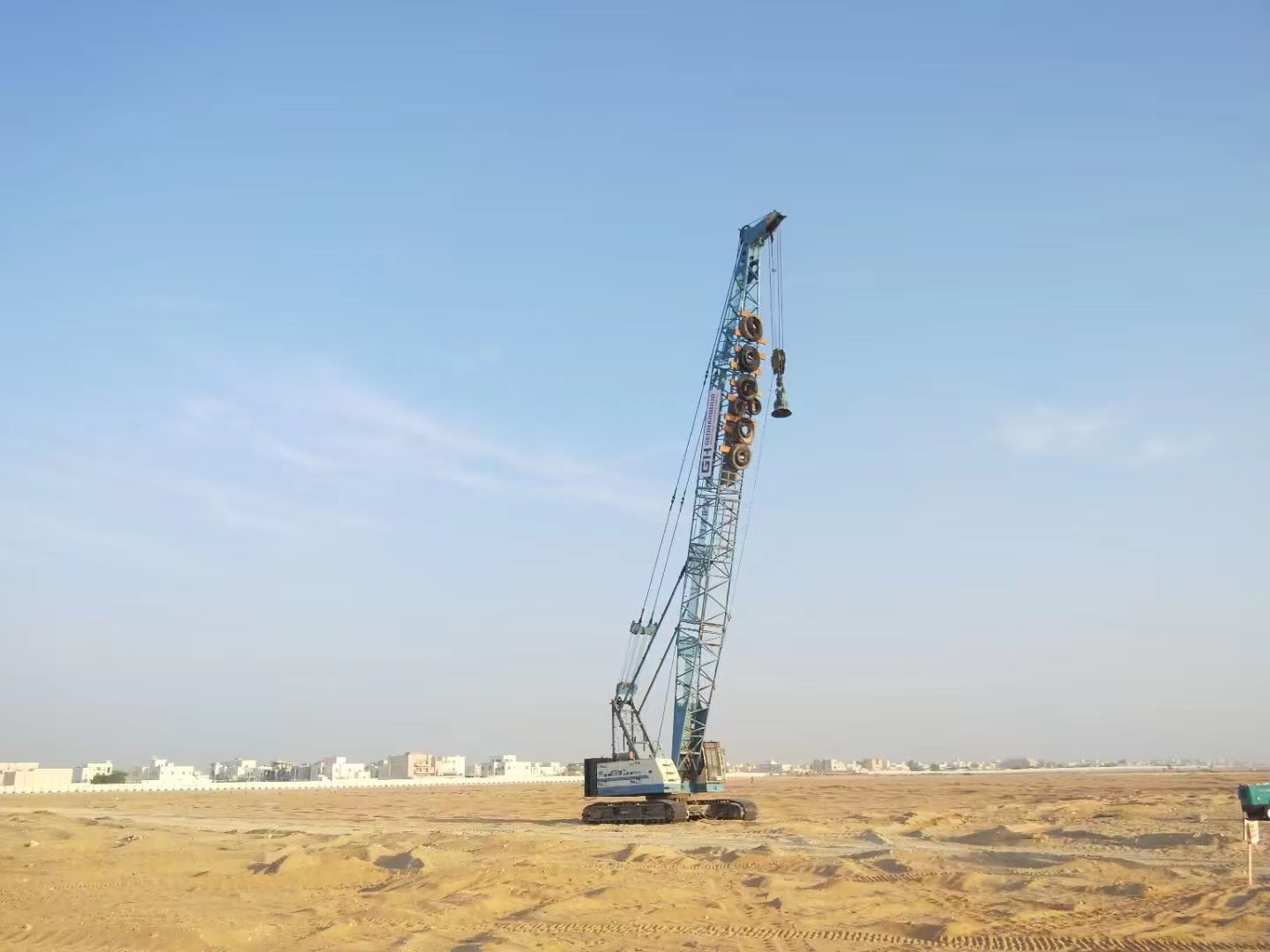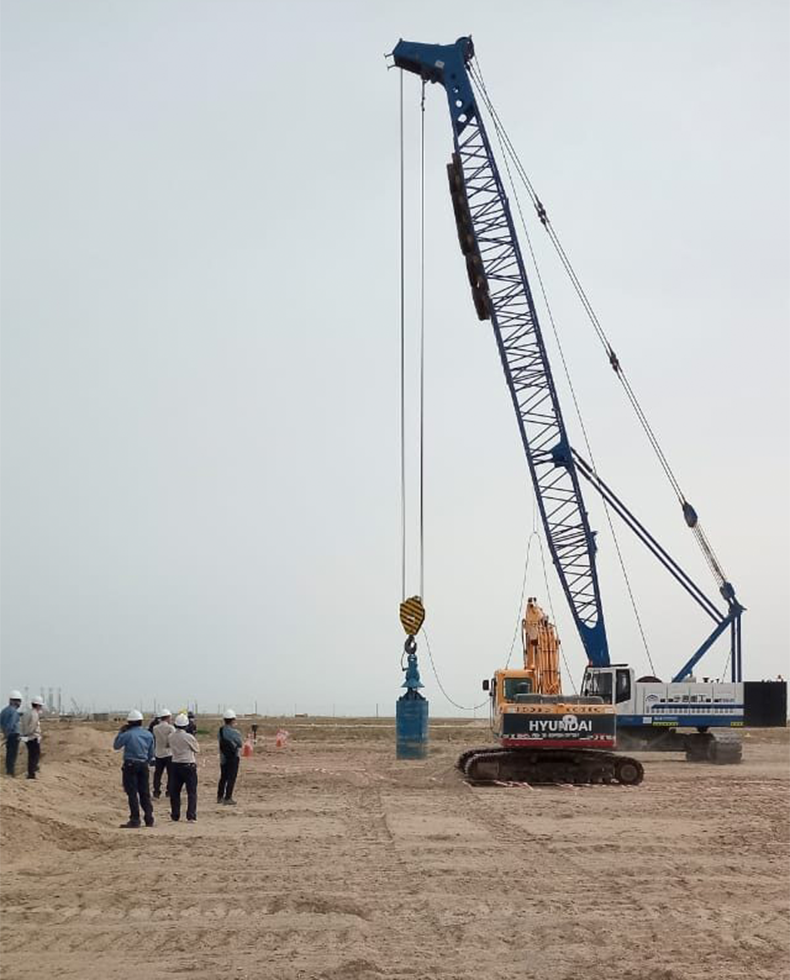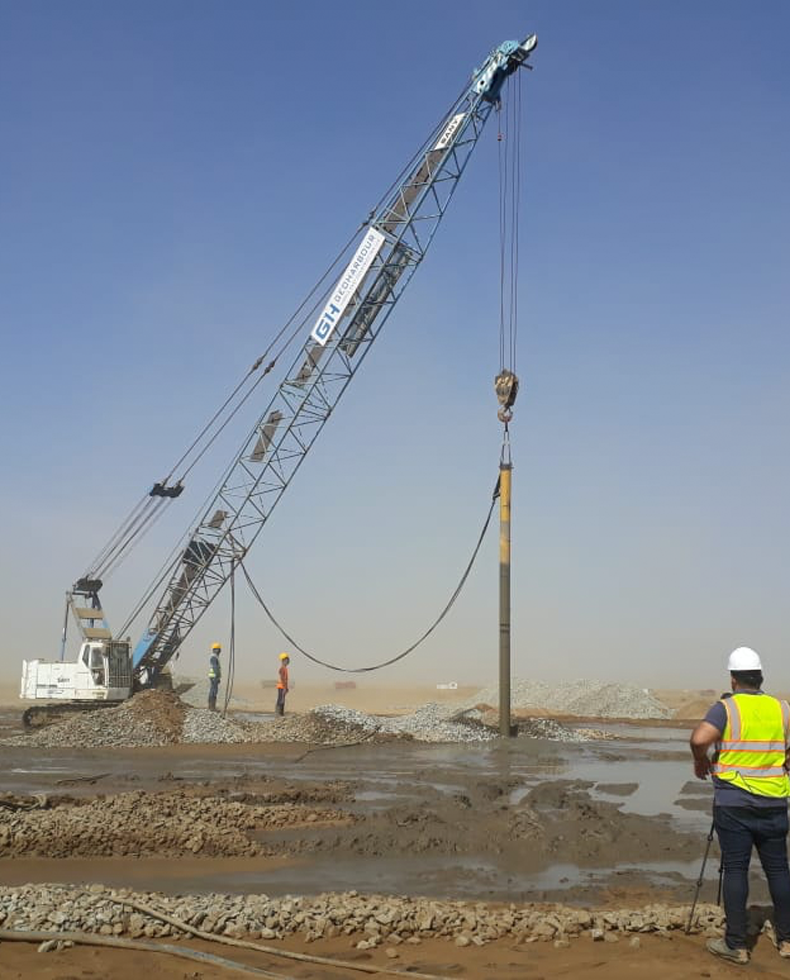Marine Work
Dynamic compaction (DC) is a ground improvement technique that involves using a crane to hoist a heavy weight of around 10-30 tonnes and dropping it from a height onto a pre-determined grid pattern. The repeated impact of the heavy weight onto the ground causes the soil particles to rearrange and become more compact, increasing soil density and strength. This technique is particularly effective for improving loose, granular soils and fills and is commonly used in constructing roads, railways, and other infrastructure projects.
Common uses
- Increase bearing capacity
- Decrease settlement
- Mitigate liquefaction
- Reduce sinkhole potential
Process
Dynamic compaction is a highly effective ground improvement technique that uses heavy steel and concrete weight to repeatedly tamp the surface of soils and fill materials. The weight, typically weighing between 5 and 10 tonnes, is dropped in free fall from heights of up to 10 meters, resulting in a powerful impact that causes the soil particles to rearrange and pack more tightly together, increasing density and strength.
The tamper is dropped several times on a grid pattern over the site to ensure the best results to form a pass. The number of passes required on a site may vary depending on the soil type and condition, but typically two or three keys are needed. After each receipt, the imprints formed at each drop position are infilled with granular material to ensure the entire site is uniformly compacted.
Dynamic compaction is a versatile technique that can improve soil types, including sands, gravels, and clays. It is commonly used in constructing roads, railways, and other heavy infrastructure projects, as well as for stabilizing slopes and embankments. Overall, dynamic compaction is an effective, efficient, and reliable way to improve the strength and stability of soils and fill materials.
Advantages
- Capable of compacting a wide variety of weak soils
- Increased bearing capacity
- Reduced settlement
- Treated granular soils and fills have increased density, friction angle, and stiffness
- Can improve soil conditions on marginal sites to the extent that shallow foundations can be used without deep excavation or piling
- Removal of compressible, contaminated fills can sometimes be avoided
- Construction can commence immediately after the DC work is completed, as it leaves a clean site that is free from debris





